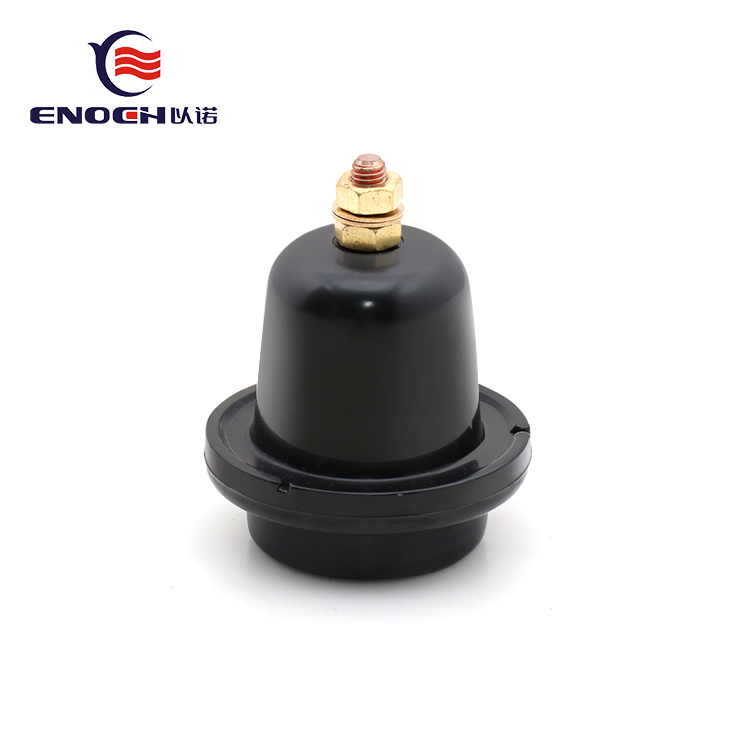Sealing Excellence: Unveiling the Ingenious Design of the High Voltage Bushing Well's Sealing Mechanism
2024-01-23
Introduction:
The High Voltage Bushing Well operates at the heart of electrical infrastructure, facing the challenges of diverse environmental conditions. To ensure its longevity and optimal performance, a robust sealing mechanism becomes imperative. In this blog, we delve into the intricacies of how the sealing mechanism of the High Voltage Bushing Well is ingeniously designed to maintain integrity in the face of various environmental conditions.
1. Purpose of Sealing Mechanism:
The sealing mechanism serves a dual purpose – to protect the internal components of the High Voltage Bushing Well from external environmental factors and to prevent contaminants from infiltrating the well, ensuring its continued functionality.
2. Materials Resilient to Environmental Factors:
The materials chosen for the sealing mechanism are carefully selected for their resilience to environmental elements. These materials must withstand temperature variations, UV exposure, moisture, and other conditions without compromising their sealing properties.
3. IP Rating Compliance:
The sealing mechanism is designed to comply with Ingress Protection (IP) ratings, indicating the well's resistance to dust, solid objects, and water. A higher IP rating ensures greater protection, making the High Voltage Bushing Well suitable for a wide range of environmental settings.
4. Compression Seals:
Compression seals play a vital role in the sealing mechanism. These seals are designed to compress under pressure, creating a tight and secure barrier against external elements. The compression action enhances the well's resistance to moisture and contaminants.
5. Environmental Gaskets:
Specifically engineered environmental gaskets form an integral part of the sealing mechanism. These gaskets are crafted from materials with excellent sealing properties, providing an effective barrier against environmental ingress.
6. Corrosion-Resistant Components:
Components within the sealing mechanism are often made from corrosion-resistant materials such as stainless steel or alloys. This choice ensures that the sealing system remains robust over time, even in corrosive environments.
7. Self-Healing Properties:
Some sealing mechanisms incorporate materials with self-healing properties. This feature allows the sealing system to recover from minor damages over time, maintaining its effectiveness in the face of wear and tear.
8. Vibration and Movement Compensation:
The sealing mechanism takes into account potential vibrations and movements in the High Voltage Bushing Well. Flexible materials or designs that accommodate slight movements help prevent the degradation of the seal under dynamic conditions.
9. Adaptability to Temperature Extremes:
The High Voltage Bushing Well may operate in environments with extreme temperatures. The sealing mechanism is engineered to remain effective across a broad temperature range, ensuring that it maintains a reliable seal in both hot and cold conditions.
10. UV-Resistant Coatings:
External components exposed to sunlight may be coated with UV-resistant materials. These coatings protect against UV degradation, preserving the integrity of the sealing mechanism over extended periods of exposure.
11. Hermetic Sealing Techniques:
In certain applications, hermetic sealing techniques may be employed. Hermetic seals create an airtight and impervious enclosure, preventing the entry of moisture or contaminants into the well and maintaining a controlled environment for internal components.
12. Regular Inspection Points:
The sealing mechanism design incorporates provisions for regular inspection points. These inspection points enable maintenance personnel to assess the condition of the seals and address any issues promptly, ensuring continuous integrity.
13. Environmental Testing Protocols:
The sealing mechanism undergoes rigorous environmental testing during the manufacturing process. Testing protocols simulate various environmental conditions to validate the effectiveness of the seals in real-world scenarios.
14. Flexible Seal Designs:
Seals may feature flexible designs that allow for expansion and contraction in response to temperature fluctuations. This flexibility ensures that the seals maintain contact with surfaces, preventing gaps that could compromise the integrity of the High Voltage Bushing Well.
15. Comprehensive System Integration:
The sealing mechanism is integrated into the overall design of the High Voltage Bushing Well as a comprehensive system. The design accounts for multiple sealing points and ensures that the entire system works cohesively to create a secure and protective environment for internal components.
Conclusion:
The sealing mechanism of the High Voltage Bushing Well stands as a testament to engineering precision, offering a resilient barrier against the challenges posed by diverse environmental conditions. As we unravel the intricacies of this sealing system, it becomes evident that every element is meticulously designed to ensure the well's integrity, allowing it to function seamlessly in the demanding landscape of electrical infrastructure. In the dance between technology and the environment, the High Voltage Bushing Well emerges as a harmonious ensemble, where the sealing mechanism plays a pivotal role in preserving the longevity and reliability of this crucial component.



